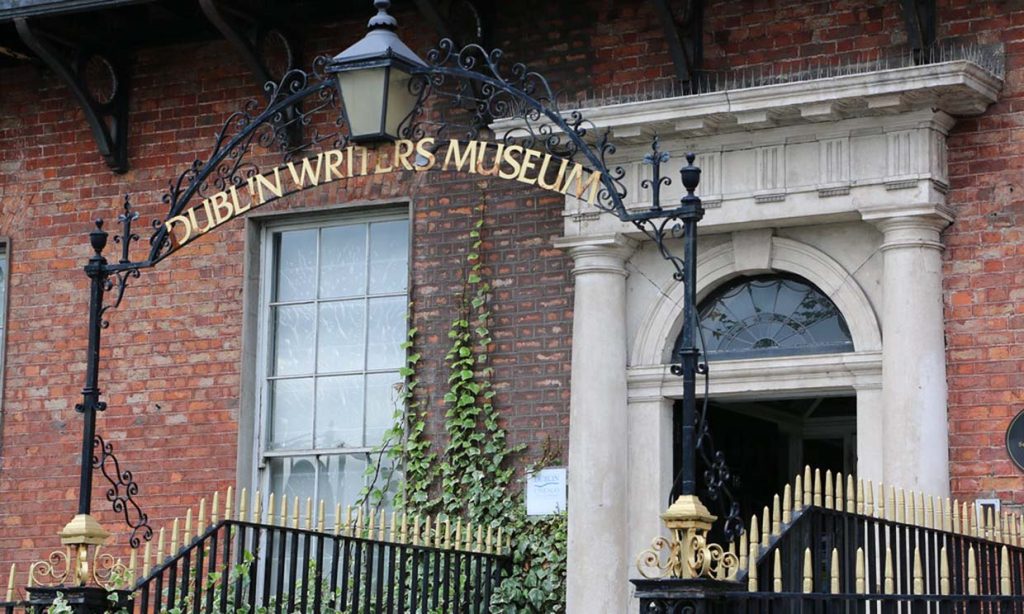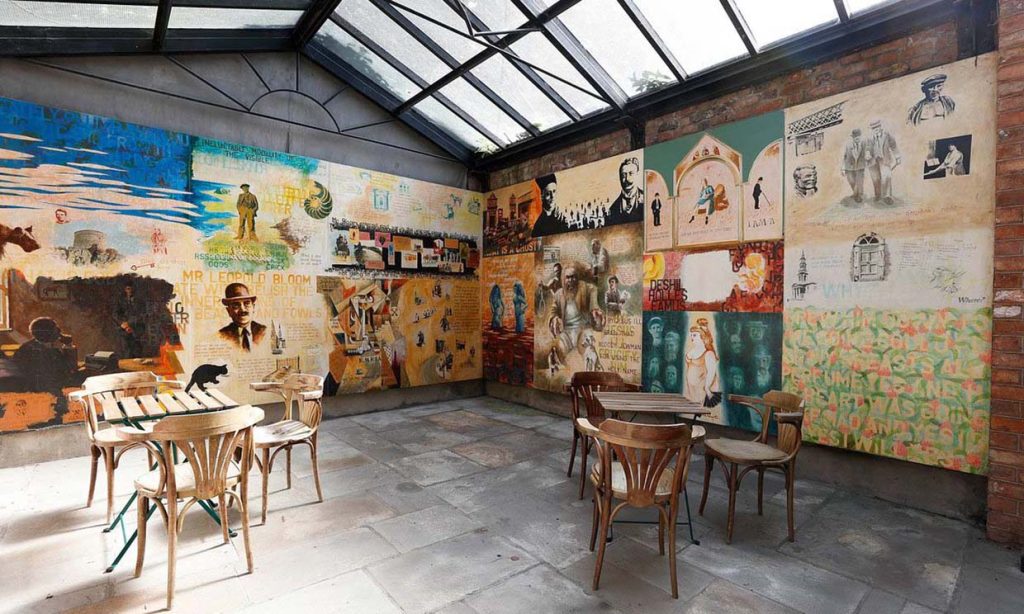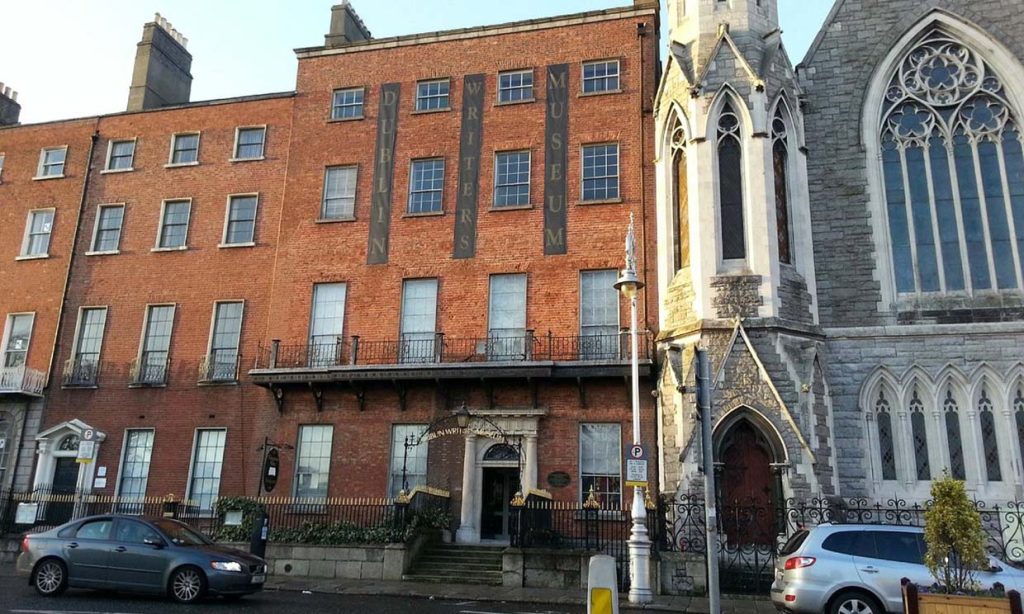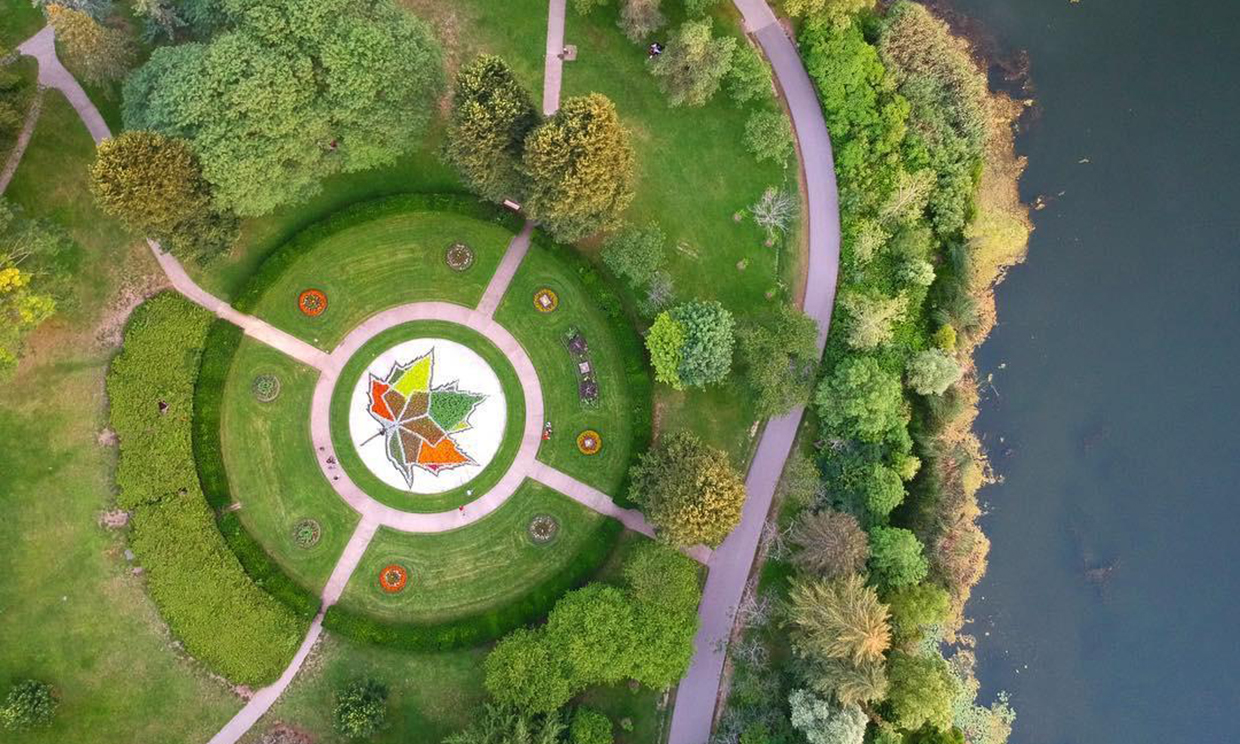
Dublin, a city steeped in rich literary heritage, has been a beacon for writers and literary enthusiasts for centuries. As a passionate traveler and literature aficionado, I embarked on a journey to explore the Dublin Writers Museum, a place dedicated to celebrating the lives and works of the city’s most renowned authors. This diary entry chronicles my detailed experiences, insights, and recommendations for visiting the Dublin Writers Museum and other literary landmarks in this vibrant city.
Dublin Writers Museum: A Sanctuary for Literary Lovers
Location and Accessibility
The Dublin Writers Museum is located at 18 Parnell Square North, Dublin 1, in the heart of the city’s cultural quarter. Its central location makes it easily accessible by various modes of transportation. I opted for the convenience of public transit and took the Luas Green Line to the Parnell Street stop, which is just a short walk away from the museum. For those driving, there are nearby parking facilities, but be prepared for typical city traffic and parking fees.
Ticketing and Admission
Tickets for the Dublin Writers Museum can be purchased online through the official museum website or on-site at the entrance. I found booking online to be more convenient, allowing me to skip the queue and secure a spot for the specific time slot I preferred. The general admission fee is €7.50 for adults, with discounts available for students, seniors, and groups. The museum also offers a combined ticket with other cultural attractions in Dublin for a more comprehensive experience.
The Museum Experience
Upon entering the museum, I was immediately struck by the elegant Georgian architecture, which sets the tone for the literary treasures within. The museum is housed in an 18th-century mansion, and its grandiose interiors provide a fitting backdrop for the exhibits.
The museum’s collection is arranged chronologically, beginning with the works of early Irish writers and progressing through to contemporary authors. One of the highlights for me was the original manuscripts and first editions of works by James Joyce, Samuel Beckett, and W.B. Yeats. Seeing these priceless documents up close was a surreal experience, allowing me to connect with the literary giants on a personal level.
Each room in the museum is dedicated to different periods and genres, with detailed descriptions and anecdotes about the authors’ lives. The audio guide, included in the admission fee, provided additional insights and brought the exhibits to life with stories narrated by literary experts.
Personal Reflections
As I wandered through the museum, I felt a profound sense of connection to the writers who have shaped Irish literature. The exhibits are meticulously curated, offering a deep dive into the personal and professional lives of the authors. I particularly enjoyed the section dedicated to James Joyce, whose innovative narrative techniques and complex characters have left an indelible mark on modern literature.
The museum also hosts temporary exhibitions and literary events, adding a dynamic element to the experience. During my visit, there was a special exhibition on Irish women writers, highlighting their contributions and struggles in a male-dominated literary world. This added layer of context made my visit even more enriching.
Recommendations and Tips
The Dublin Writers Museum is a must-visit for anyone interested in literature, history, or Irish culture. I recommend allocating at least two hours to fully appreciate the exhibits and take in the rich narratives. The museum also has a charming café and a well-stocked bookshop, where you can purchase works by the featured authors and other literary souvenirs.
For an enhanced experience, consider visiting during one of the museum’s special events or author readings. These events provide unique opportunities to engage with contemporary writers and gain deeper insights into the literary scene.
Exploring the Literary Landscape of Dublin: Three Must-Visit Sites

- Trinity College and the Book of Kells Location and Accessibility Trinity College, Dublin’s oldest university, is located at College Green, Dublin 2. It is easily accessible by public transport, including the DART train and numerous bus routes. The main entrance is situated on College Street, opposite the historic Bank of Ireland building. Ticketing and Admission Admission to Trinity College’s Long Room Library and the Book of Kells exhibition is €14 for adults, with discounted rates for students, seniors, and children. Tickets can be purchased online through the official Trinity College website or at the entrance. I recommend booking online to avoid long queues, especially during peak tourist seasons. The Experience Stepping into Trinity College feels like entering a different era. The cobblestone paths and historic buildings exude a sense of academic grandeur. The highlight of my visit was the Long Room Library, home to over 200,000 of the library’s oldest books, including the Book of Kells, a stunningly illuminated manuscript created by Celtic monks around 800 AD. The exhibition begins with an introduction to the history and significance of the Book of Kells, followed by a viewing of the manuscript itself. The intricate details and vibrant colors of the illustrations are breathtaking, showcasing the artistic and scholarly achievements of the monks. The Long Room, with its towering bookshelves and impressive barrel-vaulted ceiling, is a bibliophile’s dream. The library also houses the Brian Boru Harp, one of the oldest surviving Gaelic harps and a symbol of Ireland. Personal Reflections Visiting Trinity College and the Book of Kells exhibition was a profoundly moving experience. The sense of history and the dedication to preserving these literary treasures left a lasting impression on me. The tranquility of the Long Room provided a perfect space for contemplation and appreciation of the written word. Recommendations and Tips Allocate at least two hours for the visit to fully explore the exhibition and the Long Room. The college grounds are also worth a leisurely stroll, offering beautiful gardens and historic architecture. The nearby Science Gallery is an excellent addition for those interested in exploring the intersection of science and art.
- James Joyce Centre Location and Accessibility The James Joyce Centre is located at 35 North Great George’s Street, Dublin 1. It is a short walk from O’Connell Street and easily accessible by bus and the Luas tram. The center is housed in a beautifully restored Georgian townhouse, adding to the literary ambiance. Ticketing and Admission Admission to the James Joyce Centre is €5 for adults, with discounts available for students, seniors, and children. Tickets can be purchased on-site or online through the center’s official website. The Experience The James Joyce Centre is dedicated to promoting an understanding of the life and works of James Joyce. The center features a range of exhibits, including manuscripts, letters, and personal items belonging to Joyce. One of the highlights is the detailed replica of Joyce’s writing desk, providing a glimpse into his creative process. The center also offers guided tours of Joyce’s Dublin, taking visitors to key locations featured in his works, such as “Ulysses” and “Dubliners.” These tours provide a deeper understanding of Joyce’s connection to the city and how it influenced his writing. Personal Reflections Visiting the James Joyce Centre was an enlightening experience. The exhibits are well-presented and offer a comprehensive look at Joyce’s life and literary achievements. The guided tour was particularly memorable, as it brought to life the Dublin of Joyce’s time and highlighted the city’s enduring influence on his work. Recommendations and Tips Allocate at least an hour to explore the exhibits at the center and consider joining one of the guided tours for a more immersive experience. The center also hosts literary events and readings, so check the schedule in advance to coincide your visit with one of these special events.
- Marsh’s Library Location and Accessibility Marsh’s Library is located at St. Patrick’s Close, Dublin 8, adjacent to St. Patrick’s Cathedral. It is easily accessible by bus and within walking distance from the city center. Ticketing and Admission Admission to Marsh’s Library is €5 for adults, with discounted rates for students, seniors, and children. Tickets can be purchased on-site, and no prior booking is necessary. The Experience Marsh’s Library, established in 1707, is the oldest public library in Ireland. The library’s interior is a well-preserved example of an early 18th-century scholar’s library, complete with oak bookcases and a tranquil reading room. The library houses over 25,000 rare books, including early printed books, manuscripts, and maps. One of the most fascinating aspects of the library is the “cages” where readers were once locked in to prevent them from stealing valuable books. Personal Reflections Marsh’s Library is a hidden gem in Dublin. The sense of history and the reverence for knowledge that permeates the space is palpable. I found myself captivated by the collection of rare books and the stories they hold. The serene atmosphere made it a perfect place for quiet reflection. Recommendations and Tips Allocate at least an hour to explore the library. The nearby St. Patrick’s Cathedral is also worth a visit, offering a chance to explore another significant historical site in Dublin. The library often hosts exhibitions and events, so check their schedule for any special happenings during your visit.
Four Recommended Literary Landmarks in Dublin
- Oscar Wilde House Location and Accessibility The Oscar Wilde House is located at 1 Merrion Square, Dublin 2. It is easily accessible by bus, and the nearest DART station is Pearse Street. The house is situated in one of Dublin’s most elegant Georgian squares, adding to its charm. Overview and Experience The Oscar Wilde House is the former childhood home of the famous playwright and poet. Although the house is not always open to the public, guided tours are available by appointment, offering a unique glimpse into Wilde’s early life and the environment that shaped his literary career. The interior of the house has been beautifully restored, with period furnishings and décor that reflect the Wilde family’s affluent lifestyle. The tour includes anecdotes about Wilde’s family, his education, and the formative years that influenced his later works. Personal Reflections Visiting the Oscar Wilde House was a fascinating journey into the life of one of literature’s most flamboyant figures. The tour was both informative and entertaining, providing a deeper understanding of Wilde’s wit, creativity, and the societal influences on his writing. Recommendations and Tips Arrange your visit in advance by contacting the house for tour availability. Merrion Square Park, located opposite the house, features a colorful statue of Oscar Wilde and is a lovely spot for a leisurely stroll.
- The Abbey Theatre Location and Accessibility The Abbey Theatre is located at 26 Abbey Street Lower, Dublin 1, near the River Liffey. It is easily accessible by bus and the Luas tram, with the Abbey Street stop just a short walk away. Overview and Experience Founded in 1904 by W.B. Yeats and Lady Augusta Gregory, the Abbey Theatre is Ireland’s national theater and a cultural landmark. The theater has a rich history of producing works by Ireland’s most celebrated playwrights, including Samuel Beckett, Sean O’Casey, and J.M. Synge. I attended a performance of a contemporary Irish play, which was an enthralling experience. The theater’s intimate setting and superb acoustics made for an engaging and immersive experience. The play itself was thought-provoking and beautifully acted, showcasing the talent and creativity of modern Irish theater. Personal Reflections The Abbey Theatre is a testament to Dublin’s vibrant cultural scene. The quality of the performances and the historical significance of the venue make it a must-visit for any literature or theater enthusiast. The experience left me with a profound appreciation for Irish drama and its enduring legacy. Recommendations and Tips Check the theater’s schedule in advance and book tickets online to secure the best seats. The theater also offers backstage tours, providing an insider’s look at the production process and the theater’s history. Allocate time to explore the surrounding area, including the nearby Custom House and the scenic River Liffey.
- National Library of Ireland Location and Accessibility The National Library of Ireland is located at Kildare Street, Dublin 2, adjacent to Leinster House. It is easily accessible by bus and within walking distance from Trinity College and St. Stephen’s Green. Overview and Experience The National Library of Ireland houses an extensive collection of Irish literature, manuscripts, newspapers, and photographs. The library offers a range of exhibitions and events that explore Ireland’s literary heritage and contemporary literary scene. One of the highlights of my visit was the Yeats Exhibition, which provides a comprehensive look at the life and works of W.B. Yeats. The exhibition features original manuscripts, personal items, and multimedia displays that bring Yeats’s poetry and plays to life. Personal Reflections The National Library of Ireland is a treasure trove of literary history. The Yeats Exhibition was particularly moving, offering an intimate glimpse into the poet’s creative process and personal life. The library’s tranquil reading rooms and impressive architecture also make it a wonderful place to spend a few quiet hours. Recommendations and Tips Allocate at least two hours to explore the exhibitions and take advantage of the library’s research facilities if you have a specific literary interest. The library also hosts regular talks and readings, so check their schedule for upcoming events.
- Sweny’s Pharmacy Location and Accessibility Sweny’s Pharmacy is located at 1 Lincoln Place, Dublin 2, near Trinity College. It is easily accessible by bus and within walking distance from the city center. Overview and Experience Sweny’s Pharmacy is a charming, old-fashioned chemist shop made famous by its appearance in James Joyce’s “Ulysses.” The shop has been preserved as it was during Joyce’s time and now operates as a volunteer-run literary center. I attended one of the daily readings of “Ulysses,” where volunteers read excerpts from the novel in a cozy, informal setting. The shop is filled with vintage bottles, books, and memorabilia, creating a nostalgic atmosphere that transports visitors back to early 20th-century Dublin. Personal Reflections Visiting Sweny’s Pharmacy was a delightful and unique experience. The readings were engaging and brought Joyce’s complex prose to life. The volunteers are passionate about literature and eager to share their knowledge and love for Joyce’s work. Recommendations and Tips Allocate about an hour for the visit, and try to attend one of the daily readings if possible. The shop also sells lemon soap, famously mentioned in “Ulysses,” as well as a selection of books and literary souvenirs. The nearby National Gallery of Ireland is worth a visit for its impressive art collection.

My journey through Dublin’s literary landmarks was an enriching and unforgettable experience. The Dublin Writers Museum, along with the other literary sites I visited, offered a deep dive into the city’s rich literary heritage and the lives of its most celebrated authors. Each site had its own unique charm and provided valuable insights into the world of Irish literature.
For anyone with a passion for literature, history, or culture, Dublin is a city that should be at the top of your travel list. The blend of historic sites, vibrant cultural scene, and warm hospitality make it a destination that will captivate and inspire you. I leave Dublin with a heart full of memories and a renewed appreciation for the power of the written word.


